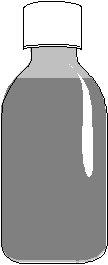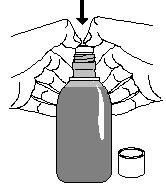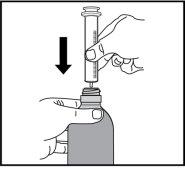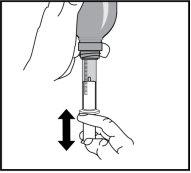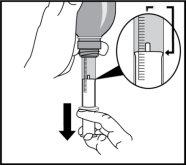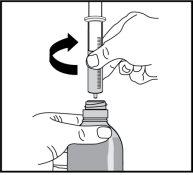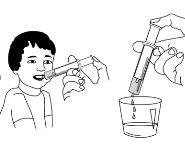
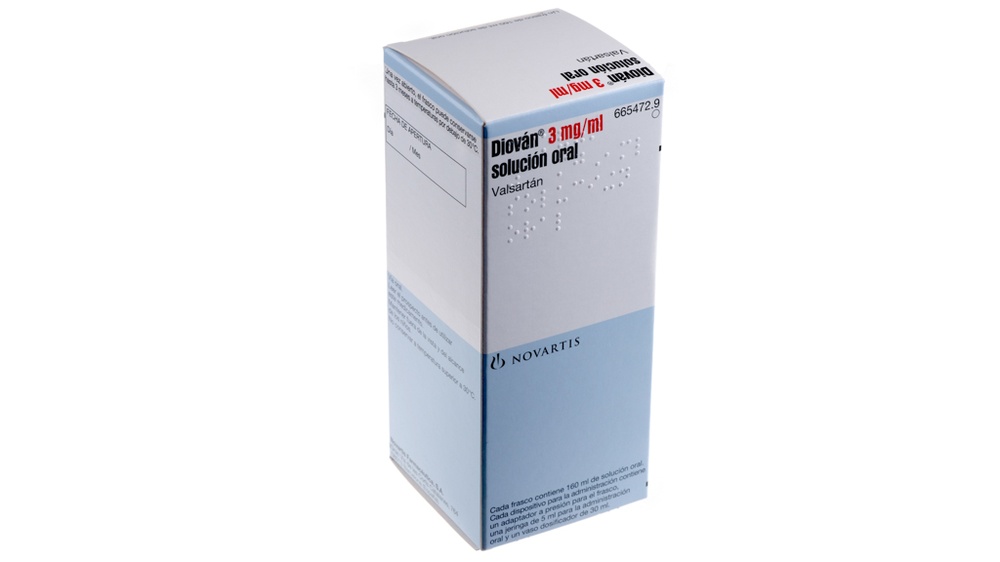
DIOVAN 3mg/ml ORAL SOLUTION

Ask a doctor about a prescription for DIOVAN 3mg/ml ORAL SOLUTION

How to use DIOVAN 3mg/ml ORAL SOLUTION
Introduction
Package Leaflet: Information for the User
Diován 3mg/ml Oral Solution
valsartan
Read all of this leaflet carefully before you start taking this medicine because it contains important information for you.,keep this leaflet. You may need to read it again..
- Keep this leaflet, you may need to read it again.
- If you have any further questions, ask your doctor or pharmacist.
- This medicine has been prescribed for you only. Do not pass it on to others. It may harm them, even if their signs of illness are the same as yours.
- If you get any side effects, talk to your doctor or pharmacist. This includes any possible side effects not listed in this leaflet. See section 4.
Contents of the pack
- What is Diován and what is it used for
- What you need to know before you take Diován
- How to take Diován
- Possible side effects
- Storage of Diován
- Contents of the pack and other information
1. What is Diován and what is it used for
Diován contains the active substance valsartan and belongs to a class of medicines known as angiotensin II receptor antagonists, which help to control high blood pressure. Angiotensin II is a substance in the body that causes blood vessels to narrow, leading to an increase in blood pressure. Diován works by blocking the effect of angiotensin II. As a result, blood vessels relax and blood pressure decreases.
Diován 3 mg/ml oral solution can be usedto treat high blood pressure in children and adolescents from 1 toless than18years of age.High blood pressure increases the workload of the heart and arteries. If left untreated, it can damage blood vessels in the brain, heart, and kidneys, and may lead to stroke, heart failure, or kidney failure. High blood pressure increases the risk of heart attacks. Lowering blood pressure to normal levels reduces the risk of developing these disorders.
2. What you need to know before you take Diován
Do not take Diován:
- if you are allergic(hypersensitive) to valsartan or any of the other ingredients of this medicine (listed in section 6).
- if you have a severe liver disease.
- if you are pregnantof more than 3 months(it is also better to avoid Diován during the first months of pregnancy – see section Pregnancy).
- if you have diabetes or kidney problems and are being treated with a blood pressure medicine that contains aliskiren.
If any of the above applies to you,tell your doctordo not takeDiován.
Warnings and precautions
Consult your doctor before taking Diován
- if you have liver disease.
- if you have severe kidney disease or are undergoing dialysis.
- if you have narrowing of the kidney artery.
- if you have recently had a kidney transplant (received a new kidney).
- if you have experienced swelling of the tongue and face caused by an allergic reaction called angioedema when taking other medicines (including ACE inhibitors), inform your doctor. If you have these symptoms when taking Diován, stop taking it immediately and never take it again. See also section 4 “Possible side effects”.
- if you experience abdominal pain, nausea, vomiting, or diarrhea after taking Diován. Your doctor will decide whether to continue treatment. Do not stop taking Diován on your own.
- if you are taking medicines that increase the amount of potassium in your blood. These include potassium supplements or salt substitutes that contain potassium, potassium-sparing medicines, and heparin. It may be necessary to regularly check the amount of potassium in your blood.
- if you have aldosteronism, a disease in which the adrenal glands produce too much aldosterone hormone. In this case, it is not recommended to take Diován.
- if you have lost a lot of fluid (dehydration) due to diarrhea, vomiting, or high doses of diuretics (medicines that increase urine production).
- if you are taking any of the following medicines used to treat high blood pressure:
- an angiotensin-converting enzyme inhibitor (ACE inhibitor) (e.g., enalapril, lisinopril, ramipril), especially if you have kidney problems related to diabetes.
- aliskiren.
Your doctor may check your kidney function, blood pressure, and electrolyte levels (e.g., potassium) in your blood at regular intervals.
See also the information under the heading “Do not take Diován”.
You must inform your doctor if you think you are (or might become) pregnant. Diován is not recommended at the start of pregnancy, and should not be taken if you are more than 3 months pregnant, as it may cause serious harm to your baby if used during this period (see section Pregnancy).
Using Diován with other medicines
Tell your doctor or pharmacist if you are using, have recently used, or might use any other medicines.
The effect of treatment with Diován may be altered if taken with certain medicines. Your doctor may need to change your dose and/or take other precautions or, in some cases, stop treatment with one of the medicines. This applies to both prescription and non-prescription medicines, especially:
- other medicines that lower blood pressure,especially diuretics(medicines that increase urine production), ACE inhibitors, or aliskiren (see also the information under the headings “Do not take Diován” and “Warnings and precautions”).
- medicines that increase the amount of potassiumin your blood. These include potassium supplements or salt substitutes that contain potassium, potassium-sparing medicines, and heparin.
- certain pain-relieving medicinescalled non-steroidal anti-inflammatory drugs (NSAIDs).
- certain antibiotics (of the rifampicin group), a medicine used to protect against rejection in a transplant (cyclosporin), or an antiretroviral medicine used to treat HIV/AIDS (ritonavir). These medicines may increase the effect of Diován.
- lithium,a medicine used to treat certain types of psychiatric diseases.
Pregnancy and breastfeeding
- You must inform your doctor if you are pregnant(or if you think you might be pregnant).Your doctor will normally advise you to stop taking Diován before you become pregnant or as soon as you know you are pregnant and will advise you to take another medicine instead of Diován. Diován is not recommended during the first trimester of pregnancy and must not be taken after the third month of pregnancy, as it may cause serious harm to your baby when used after this period (see section Pregnancy).
- Tell your doctor if you are breastfeeding or about to start breastfeeding. Diován is not recommended during breastfeeding, and your doctor will choose another treatment for you if you want to breastfeed, especially if your baby is newborn or premature.
Driving and using machines
Before driving a vehicle, using tools, or operating machinery, or carrying out other activities that require concentration, make sure you know how Diován affects you. Like many other medicines used to treat high blood pressure, Diován can cause dizziness and affect your ability to concentrate.
Diován contains saccharose, methylparahydroxybenzoate, poloxamer, sodium, and propylene glycol
- Diován solution contains 0.3 g of saccharoseper milliliter. Take this into account if you have diabetes mellitus. If your doctor has told you that you have an intolerance to some sugars, contact them before taking Diován solution. The amount of saccharose present in Diován solution may be harmful to your teeth.
- Diován solution contains methylparahydroxybenzoate(E218). It can cause allergic reactions that appear some time after taking the solution. Symptoms can include rash, itching, urticaria. If any of these symptoms worsen, consult your doctor.
- Diován solution contains poloxamer(188). It can cause soft stools.
- Diován solution contains 3.72 mg of sodium(main component of table/cooking salt) in each ml. This is equivalent to 0.19% of the maximum recommended daily intake of sodium for an adult.
Diován solution contains 0.99 mg of propylene glycol(E 1520) in each ml of oral solution.
3. How to take Diován
Always take this medicine exactly as your doctor has told you. If you are not sure, ask your doctor or pharmacist. People with high blood pressure often do not notice any symptoms; many feel normal. This makes it very important to attend your doctor's appointments, even if you feel well.
Please read the instructions at the end of this leaflet before using the oral syringe or dosing cup.
How much to take
Diován solution should be taken once a day
Children from 1 to less than 6 years of age
- the usual starting dose is 1 mg/kg once a day. The following table shows the dose and corresponding volume of oral solution to be administered:
Child's weight | Diován dose (for the usual starting dose of 1 mg/kg) | Volume of oral solution |
10 kg | 10 mg | 3.5 ml |
15 kg | 15 mg | 5.0 ml |
20 kg | 20 mg | 6.5 ml |
25 kg | 25 mg | 8.5 ml |
30 kg | 30 mg | 10 ml |
- your doctor may prescribe a higher starting dose (2 mg/kg) if you need a rapid reduction in blood pressure.
- the dose may be increased up to a maximum of 4 mg/kg.
Children 6 years of age and older and
- who weigh less than 35kg:
- the usual starting dose for Diován oral solution is 20 mg (which is equivalent to 7 ml of solution).
- the dose may be increased up to a maximum of 40 mg (which is equivalent to 13 ml of solution).
- who weigh 35kg or more:
- the usual starting dose for Diován oral solution is 40 mg (which is equivalent to 13 ml of solution)
- the dose may be increased up to a maximum of 80 mg (which is equivalent to 27 ml of solution).
Children who started taking Diován before the age of 6 may receive a higher dose of Diován than the maximum dose mentioned above. In certain selected cases, your doctor may choose to maintain that dose.
You can take Diován with or without food.
Take Diován at about the same time each day.
If you take more Diován than you should
If you notice a strong dizziness and/or fainting, contact your doctor immediately and lie down. If you have accidentally taken more Diován solution than you should, contact your doctor, pharmacist, or hospital. You can also call the Toxicology Information Service, telephone 91 562 04 20, indicating the medicine and the amount taken.
If you forget to take Diován
If you forget to take a dose, take it as soon as you remember. However, if it is almost time for your next dose, skip the missed dose.
Do not take a double dose to make up for forgotten doses.
If you stop takingDiován
If you stop taking Diován, your condition may worsen. Do not stop taking the medicine unless your doctor tells you to.
If you have any further questions on the use of this medicine, ask your doctor or pharmacist.
4. Possible side effects
Like all medicines, this medicine can cause side effects, although not everybody gets them.
Some side effects may be serious and may require immediate medical attention:
You may experience symptoms of angioedema (a specific allergic reaction), such as:
- swelling in the face, lips, tongue, or throat.
- difficulty breathing or swallowing.
- urticaria, itching.
If you experience any of these symptoms, stop taking Diován and contact your doctor immediately (see also section 2 “What you need to know before you take Diován”).
Side effects include:
Common(may affect up to 1 in 10 people):
- dizziness.
- low blood pressure with or without symptoms such as dizziness and fainting when standing up.
- reduced kidney function (signs of kidney impairment).
Uncommon(may affect up to 1 in 100 people):
- angioedema (see section “Some symptoms require immediate medical attention”).
- sudden loss of consciousness (syncope).
- feeling of spinning (vertigo).
- marked reduction in kidney function (signs of acute kidney failure).
- muscle spasms, abnormal heart rhythm (signs of hyperkalemia).
- shortness of breath, difficulty breathing when lying down, swelling of the feet or legs (signs of heart failure).
- headache.
- cough.
- abdominal pain.
- nausea.
- diarrhea.
- fatigue.
- weakness.
Rare(may affect up to 1 in 10,000 people)
- intestinal angioedema: swelling in the intestine that occurs with symptoms such as abdominal pain, nausea, vomiting, and diarrhea.
Frequency not known(cannot be estimated from the available data):
- blistering of the skin (sign of bullous dermatitis).
- allergic reactions with skin rash, itching, and urticaria; symptoms of fever, swelling, and joint pain, muscle pain, swelling of the lymph nodes, and/or symptoms similar to those of the flu (signs of serum sickness).
- red spots, fever, itching (signs of vasculitis).
- bleeding or bruising more often than usual (signs of thrombocytopenia)
- muscle pain (myalgia).
- fever, sore throat, or mouth ulcers due to infections (symptoms of low white blood cell count, also called neutropenia).
- reduction in hemoglobin and hematocrit levels in the blood (which, in severe cases, can cause anemia).
- increase in potassium levels in the blood (which, in severe cases, can cause muscle spasms and an abnormal heart rhythm).
- elevation of liver function values (which may indicate liver damage), including an increase in bilirubin levels in the blood (which, in severe cases, can cause yellowing of the skin and eyes).
- increase in urea nitrogen and serum creatinine levels in the blood (which may indicate kidney function abnormalities).
- low sodium levels in the blood (which, in severe cases, can cause fatigue, confusion, muscle contractions, and/or convulsions).
The frequency of some side effects may vary depending on your condition. For example, certain side effects such as dizziness and reduced kidney function were observed less frequently in adult patients treated for high blood pressure than in adult patients treated for heart failure or after a recent heart attack.
Side effects in children and adolescents are similar to those observed in adults.
Reporting of side effects
If you experience any side effects, talk to your doctor or pharmacist. This includes any possible side effects not listed in this leaflet. You can also report side effects directly through the Spanish Pharmacovigilance System for Human Use Medicines (www.notificaRAM.es). By reporting side effects, you can help provide more information on the safety of this medicine.
5. Storage of Diován
- Keep out of the sight and reach of children.
- Do not use this medicine after the expiry date which is stated on the carton. The expiry date refers to the last day of the month stated.
- Do not store above 30°C.
- Once opened, the bottle can be stored for up to 3 months at temperatures below 30°C.
- Do not use this medicine if you notice that the packaging is damaged or shows signs of deterioration.
- Medicines should not be disposed of via wastewater or household waste. Ask your pharmacist how to dispose of medicines no longer required. These measures will help protect the environment.
6. Container Contents and Additional Information
Composition ofDiován
- The active ingredient is valsartan. Each ml of oral solution contains 3 mg of valsartan.
- The other components are: sucrose, methyl parahydroxybenzoate (E218), potassium sorbate, poloxamer (188), citric acid, sodium citrate, artificial blueberry flavor, propylene glycol (E1520), sodium hydroxide, hydrochloric acid, purified water (see also section 2 "Diován contains sucrose, methyl parahydroxybenzoate, poloxamer, sodium and propylene glycol").
Appearance of the Product and Container Contents
Diován 3 mg/ml oral solution is a clear, colorless to slightly yellowish solution.
- The solution is presented in a 180 ml amber glass bottle with a child-resistant screw cap and a yellow tamper-evident seal. The bottle contains 160 ml of solution. Several devices for administration are included: a pressure adapter for the bottle, a 5 ml polypropylene oral syringe, and a 30 ml polypropylene measuring cup.
Marketing Authorization Holder and Manufacturer
Marketing Authorization Holder
Novartis Farmacéutica SA
Gran Vía de les Corts Catalanes, 764
08013 Barcelona
Spain
Manufacturer
Novartis Pharma GmbH
Roonstrasse 25
D-90429 Nürnberg
Germany
Novartis Poland Sp. z o.o.
ul. Marynarska 15
02-674 Warsaw
Poland
Novartis Farmacéutica S.A.
Gran Via de les Corts Catalanes, 764
08013 Barcelona
Spain
Novartis Pharma GmbH
Sophie-Germain-Strasse 10
90443 Nuremberg
Germany
You can request more information about this medication by contacting the marketing authorization holder.
This medication is authorized in theMember States of the European Economic Area underthe following names:
Austria, Bulgaria, Cyprus, Czech Republic, Denmark, Estonia, Finland, Germany, Greece, Hungary, Iceland, Ireland, Latvia, Lithuania, Malta, Netherlands, Norway, Poland, Portugal, Romania, Slovakia, Slovenia, Spain, Sweden | Diovan |
Belgium, Luxembourg | Diovane |
France, Italy | Tareg |
Date of the last revision of this leaflet:11/2020
Detailed and updated information on this medication is available on the website of the Spanish Agency for Medicines and Health Products (AEMPS) http://www.aemps.es/
INSTRUCTIONS FOR USE OF THE ORAL SYRINGE AND MEASURING CUP
Please read these instructions carefully before taking the medication. They will help you use the oral syringe and measuring cup correctly.
What will you use?
|
| A pressure adapter for the bottle:
A bottle with the medication:
An oral syringe:
A measuring cup:
|
Insert the bottle adapter into the new medication bottle
|
Note:You may not be able to insert the adapter completely into the neck of the bottle, but it does not matter, as the bottle cap will finally push the adapter when you screw it.
|
Prepare the medication dose
|
|
|
|
Measuring a dose of medication Note: The total amount of solution that can be measured with the syringe is 5 ml. Depending on the prescribed dose, it may be necessary to repeat steps 10 to 16 several times. For example, if the prescribed dose is 13 ml, it will be necessary to take the medication from the bottle in three separate measurements: 5 ml + 5 ml + 3 ml. | |
|
|
Taking the medication | |
|
|
|
- To clean the oral syringe:
- Clean the outside of the oral syringe with a clean, dry cloth.
- Repeat this process each time you use the syringe.
- To clean the measuring cup:
- Rinse the cup with clean water.
Dry the cup with a clean cloth and place it back over the bottle cap.

How much does DIOVAN 3mg/ml ORAL SOLUTION cost in Spain ( 2025)?
The average price of DIOVAN 3mg/ml ORAL SOLUTION in December, 2025 is around 10.18 EUR. Prices may vary depending on the region, pharmacy, and whether a prescription is required. Always check with a local pharmacy or online source for the most accurate information.
- Country of registration
- Average pharmacy price10.18 EUR
- Active substance
- Prescription requiredYes
- Manufacturer
- This information is for reference only and does not constitute medical advice. Always consult a licensed doctor before taking any medication. Oladoctor is not responsible for medical decisions based on this content.
- Alternatives to DIOVAN 3mg/ml ORAL SOLUTIONDosage form: TABLET, 160 mg valsartanActive substance: valsartanManufacturer: Novartis Farmaceutica S.A.Prescription requiredDosage form: TABLET, 320 mgActive substance: valsartanManufacturer: Novartis Farmaceutica S.A.Prescription requiredDosage form: TABLET, 80 mg valsartanActive substance: valsartanManufacturer: Novartis Farmaceutica S.A.Prescription required
Alternatives to DIOVAN 3mg/ml ORAL SOLUTION in other countries
The best alternatives with the same active ingredient and therapeutic effect.
Alternative to DIOVAN 3mg/ml ORAL SOLUTION in Польша
Alternative to DIOVAN 3mg/ml ORAL SOLUTION in Украина
Online doctors for DIOVAN 3mg/ml ORAL SOLUTION
Discuss dosage, side effects, interactions, contraindications, and prescription renewal for DIOVAN 3mg/ml ORAL SOLUTION – subject to medical assessment and local rules.




